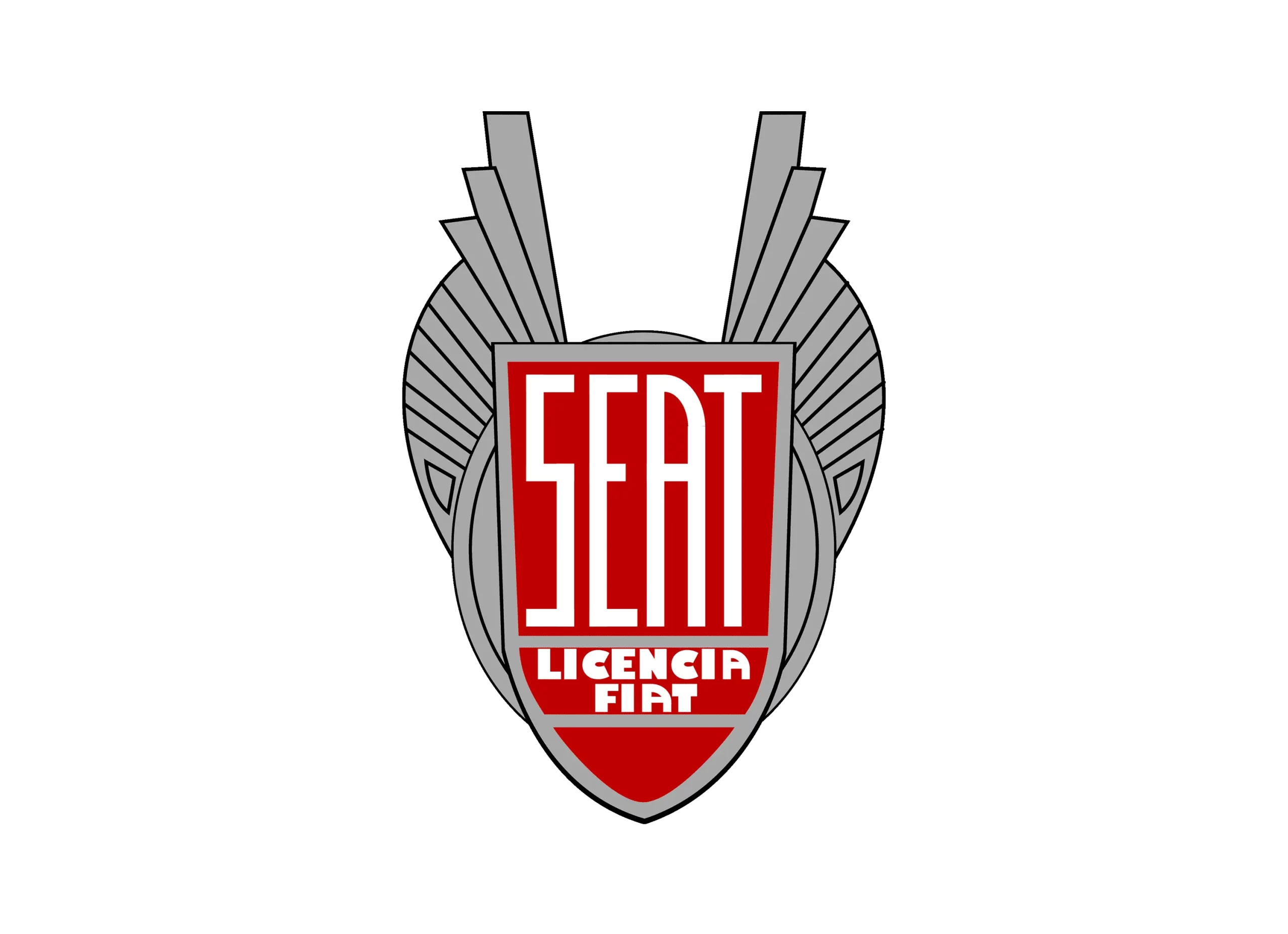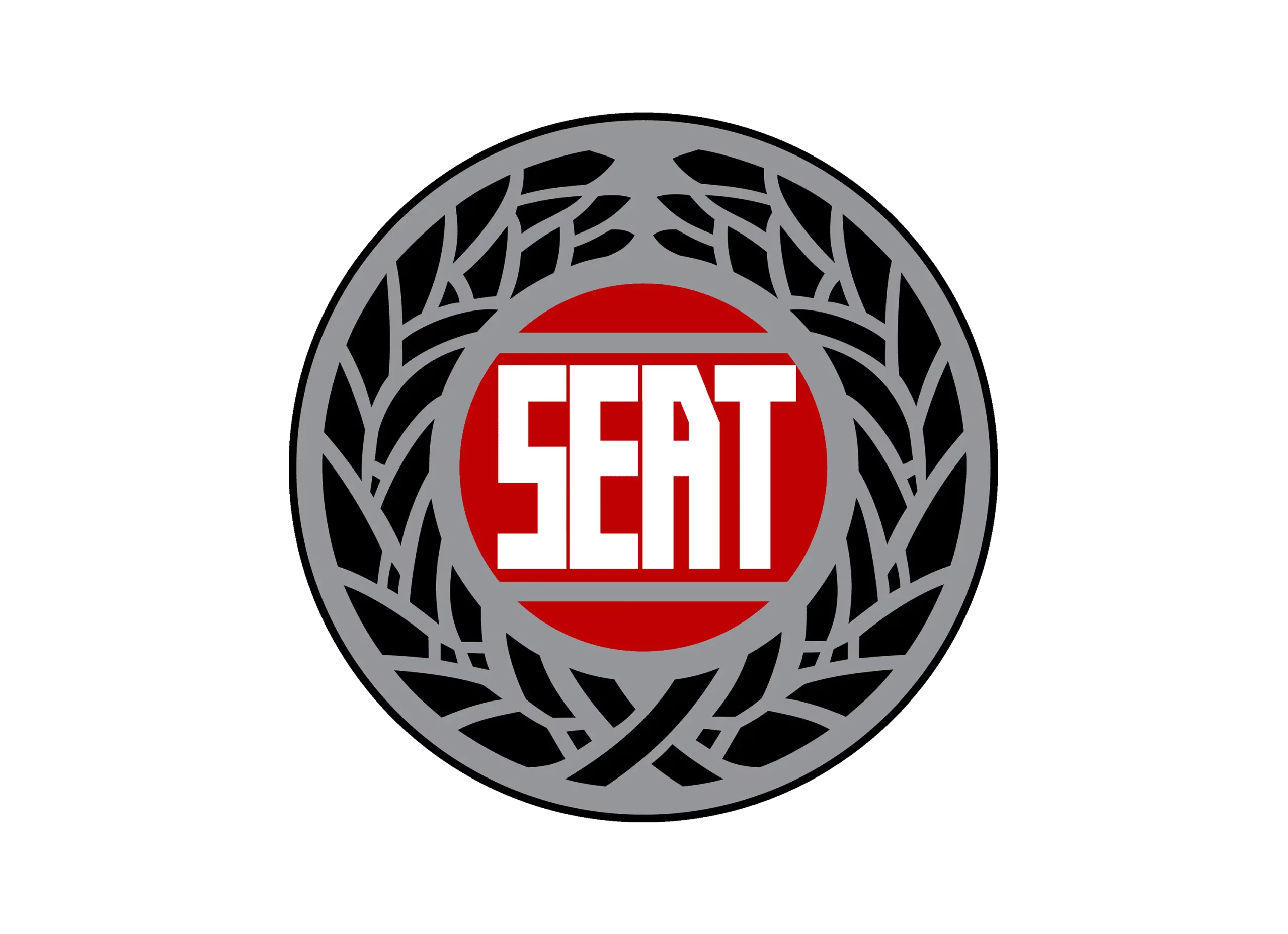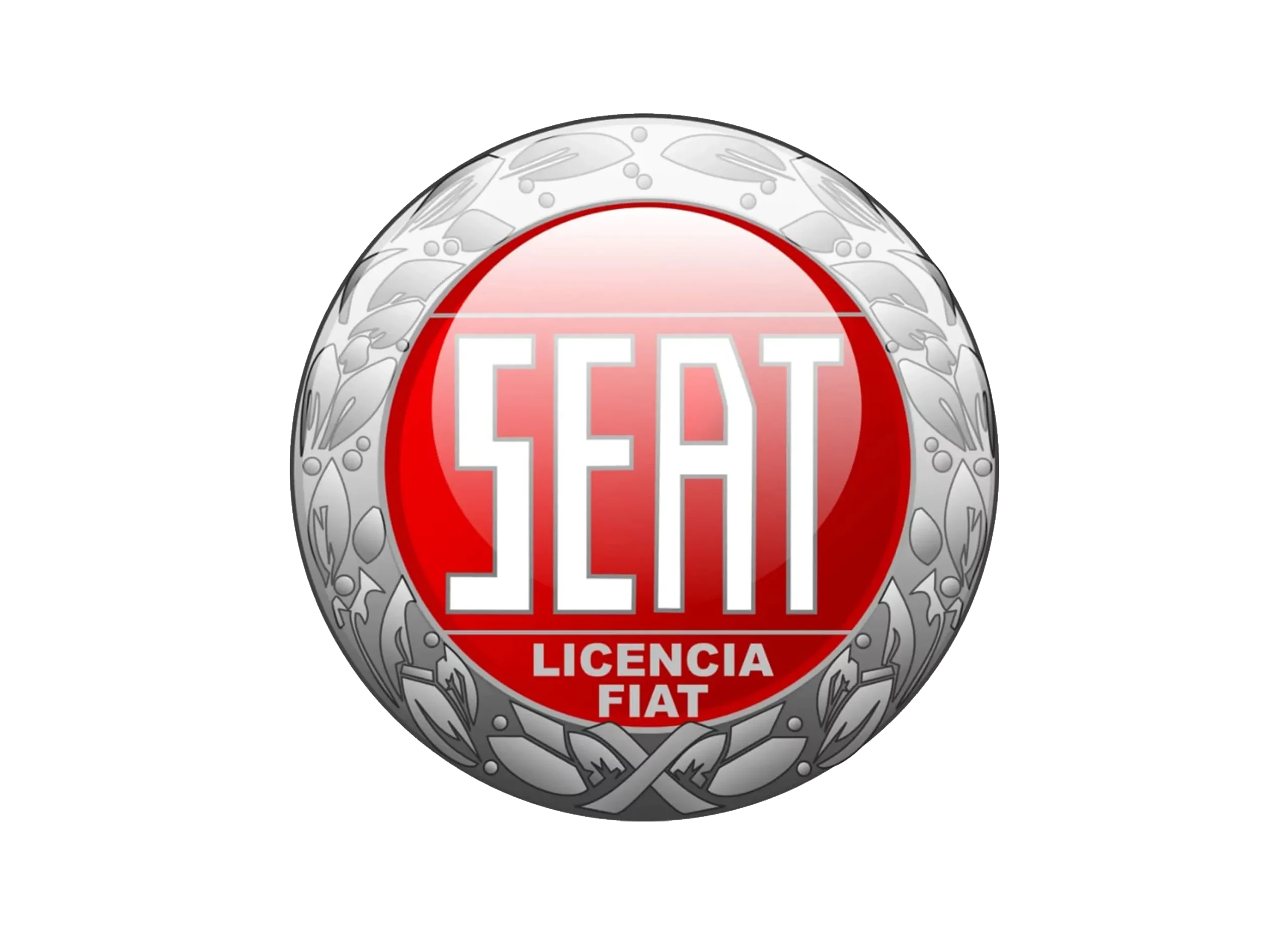Seat logo

The SEAT logo is an iconic symbol that represents the company’s brand and identity. The logo is made up of two main components: a stylized letter “S” split in two and the wordmark “SEAT” below it.
The stylized “S” is the focal point of the logo and has a dynamic and modern design. It is split in two symmetrical parts. The two halves are also slightly offset, which gives the logo a sense of movement and energy.
Below the stylized “S” is the wordmark “SEAT,” which is written in bold, uppercase letters. The wordmark is black, which provides a strong contrast against the red and white “S.” The font used for the wordmark is a custom sans-serif typeface, which has a modern and contemporary feel.
Seat Brand Overview
1950
Instituto Nacional de Industria
Martorell, Catalonia, Spain
SEAT, S.A. is a Spanish automobile manufacturer with its headquarters in Martorell, Catalonia, Spain. It was founded on May 9, 1950, by the Instituto Nacional de Industria (INI), a state-owned industrial holding company. SEAT initially produced rebadged versions of Fiat models, but in the 1980s, it began developing its own models. Since 1986, SEAT has been a wholly owned subsidiary of the German Volkswagen Group.
SEAT’s product lineup includes a range of small to mid-size vehicles, including hatchbacks, sedans, and SUVs. The brand has gained a reputation for producing stylish and affordable cars with sporty driving characteristics. In recent years, SEAT has also become known for its focus on sustainability and has introduced electric and hybrid models to its lineup.
In addition to its production facilities in Spain, SEAT also has manufacturing operations in other countries, including Portugal, the Czech Republic, and Algeria. The brand has a strong presence in Europe, particularly in its home market of Spain, where it is one of the country’s largest automakers.
Overall, SEAT is a well-respected automaker with a strong heritage in Spain and a reputation for producing stylish and affordable cars. As a subsidiary of the Volkswagen Group, SEAT has access to the resources and technology of one of the world’s largest automakers, which has enabled the brand to develop and produce high-quality vehicles that appeal to a broad range of customers.
Seat History
SEAT, S.A. is a Spanish automobile manufacturer with a rich history dating back to 1950. Since its inception, the company has evolved from producing rebadged versions of Fiat models to developing its own unique designs and establishing a reputation for producing stylish and affordable cars with sporty driving characteristics. In this blog post, we’ll take a closer look at the history of SEAT and explore how it has become one of the leading automakers in Spain.
The Early Years
SEAT was founded on May 9, 1950, by the Instituto Nacional de Industria (INI), a state-owned industrial holding company. The company was established with the goal of creating a domestic automotive industry in Spain, which at the time was heavily reliant on imported vehicles. To achieve this goal, SEAT initially produced rebadged versions of Fiat models, such as the SEAT 600, which was based on the Fiat 600.
Despite its early success in producing these rebadged models, SEAT faced significant challenges in establishing itself as a major player in the automotive industry. Spain was still recovering from the aftermath of the Spanish Civil War, and the country’s economy was struggling. Additionally, the company faced fierce competition from established automakers such as Ford and General Motors.
Expansion and Innovation
Despite these challenges, SEAT continued to expand and innovate throughout the 1960s and 1970s. In 1965, the company introduced the SEAT 850, which was a significant departure from the rebadged Fiat models it had been producing. The SEAT 850 was designed and developed entirely in-house, and it was one of the first Spanish cars to feature a rear-mounted engine.
SEAT continued to expand its product lineup throughout the 1970s, introducing a range of new models such as the SEAT 124, which was based on the Fiat 124, and the SEAT 127, which was the company’s first front-wheel-drive model. By the end of the decade, SEAT had established itself as a major player in the Spanish automotive industry, with a range of popular models and a growing reputation for innovation and quality.
Joining the Volkswagen Group
In 1982, the Spanish government began to consider the privatization of SEAT, and in 1986, the company was sold to the German Volkswagen Group. The acquisition gave SEAT access to Volkswagen’s technology and resources, which allowed the company to develop and produce higher-quality vehicles that could compete with other major automakers.
Under Volkswagen’s ownership, SEAT continued to expand and innovate, introducing new models such as the SEAT Toledo, which was a mid-size family car that combined practicality and sporty driving characteristics. In the years that followed, SEAT introduced a range of other successful models, including the SEAT Ibiza, which was a compact hatchback that quickly became one of the company’s most popular models.
Recent Developments
In recent years, SEAT has continued to innovate and expand its product lineup. The company has introduced a range of new models that emphasize sustainability and eco-friendliness, including electric and hybrid models such as the SEAT Mii electric and the SEAT Leon e-Hybrid.
SEAT has also expanded its manufacturing operations beyond Spain, establishing production facilities in other countries such as Portugal, the Czech Republic, and Algeria. The company has a strong presence in Europe, particularly in its home market of Spain, where it is one of the country’s largest automakers.















